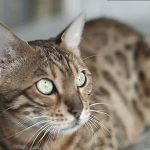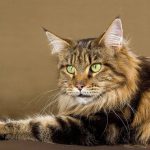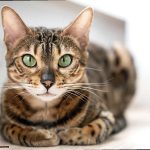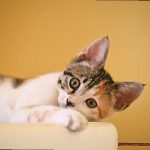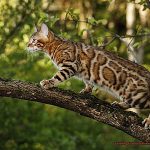Are you a cat parent who’s constantly wondering what the best food for your furry friend is? It can be overwhelming to navigate the sea of cat food options available in the market. But fret not, because I’ve got your back. As an avid cat lover and researcher, I’ve consulted with veterinarians and pet nutrition experts to bring you my findings on what cat food is truly the best.
First things first, it’s important to understand that cats are obligate carnivores. This means that their diet needs to have high-quality animal protein as the primary ingredient. So when selecting a cat food brand, make sure that chicken, fish or turkey is listed first.
Next up is carbohydrates. Too many carbs can lead to obesity and other health issues in cats. Therefore, it’s crucial to choose foods with limited amounts of grains or fillers and instead focus on fruits and vegetables for added nutrients.
Lastly, keep an eye out for any added supplements or vitamins in the food as these can provide extra health benefits for your feline friend. Omega-3 fatty acids, for example, are known to improve skin and coat health in cats.
Now that we know what to look for let’s dive into specific brands and varieties that are top-notch when it comes to your kitty’s well-being.
Nutritional Needs: What Does Your Cat Need to Stay Healthy?
The foundation of your cat’s health and well-being is proper nutrition. But with so many options available, how do you choose the best food for your feline? Here are some tips on what your cat needs and how to select appropriate food for them.
Protein
Cats are obligate carnivores, which means they require a diet that is high in protein and fat, with very little carbohydrates. This is because their bodies are designed to efficiently metabolize these nutrients for energy and overall health. Protein is an essential component of a cat’s diet as it provides them with the necessary amino acids they need to build and repair their tissues. Look for high-quality sources of protein, such as chicken or fish, listed as the first ingredient on the label.
Vitamins and Minerals
Cats require certain vitamins and minerals to maintain their health. Vitamin D and calcium are essential for strong bones, while taurine is important for healthy vision and heart function. Ensure that the cat food you choose has these essential nutrients.
Age-appropriate Food
Kittens have different nutritional needs than adult cats, while senior cats may require special diets to support their aging bodies. Choose cat food that is appropriate for your cat’s stage of life. For example, kitten food should contain more calories and protein than adult cat food.
Food Type
There are several types of cat food available, including dry kibble, wet food, and raw food. Each type of food has its benefits and drawbacks, so it’s important to choose the one that works best for you and your cat. Wet food can help keep your cat hydrated, while dry kibble can help maintain dental health.
Ingredients
Read the label carefully and look for high-quality ingredients. Avoid foods that contain fillers like corn or wheat, as these provide little nutritional value and can be difficult for cats to digest. Also, avoid foods with artificial ingredients, as they can be harmful to your cat’s health.
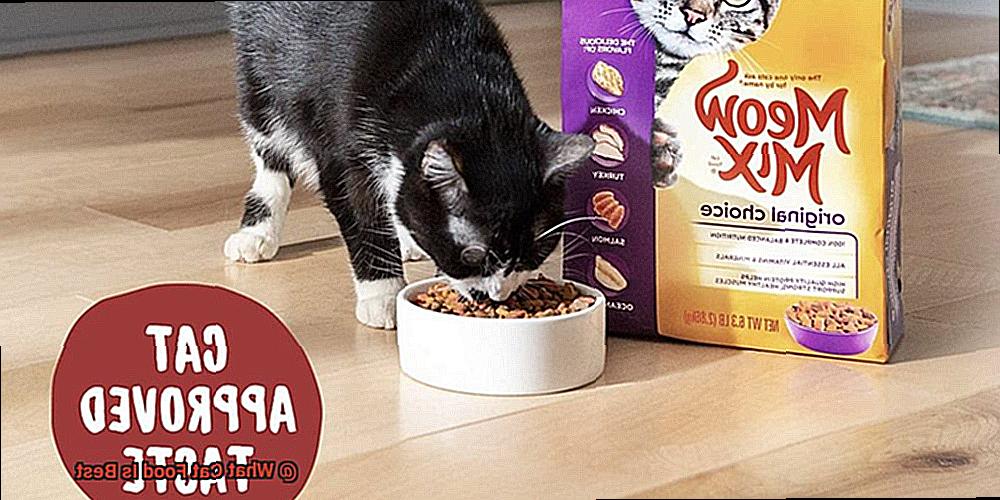
Consult Your Veterinarian
It’s always a good idea to consult with your veterinarian before making any changes to your cat’s diet. They can provide valuable insight into what type of food will work best for your cat, especially if your cat has any dietary restrictions or medical conditions.
Types of Cat Food: Dry Kibble, Wet Food, and Raw Food
There are three main types of cat food: dry kibble, wet food, and raw food. While each type has its own advantages, it’s important to weigh the pros and cons before deciding on what to feed your feline friend.
Dry kibble is the most commonly used type of cat food. It’s convenient, affordable, and easy to store. In addition, it helps scrape away plaque and tartar from your cat’s teeth while they eat. However, not all dry kibble is created equal. Some brands contain more fillers and artificial ingredients that are not nutritionally beneficial for cats. Additionally, if your cat doesn’t drink enough water, eating dry kibble can lead to urinary tract problems.
Wet food is another popular choice for cat owners. It’s higher in moisture than dry kibble, which can help keep your cat hydrated and prevent urinary tract problems. Wet food also tends to be more palatable for cats because of its texture and smell. On the downside, wet food can be more expensive than dry kibble, and it needs to be refrigerated once opened. Moreover, some cats may not like the texture or taste of wet food.
Raw food is a newer type of cat food that’s gaining popularity among pet owners. Raw food is made from raw meat, organs, and bones, and it’s designed to mimic the natural diet of a wild cat. Proponents of raw food diets claim that they’re healthier for cats because they’re free from fillers and artificial ingredients. Nevertheless, feeding raw food comes with some risks – raw meat can contain harmful bacteria like salmonella or E. coli, which can be dangerous for both cats and humans.
When choosing what type of food to feed your cat, consider their individual needs and preferences. A balanced diet that meets their nutritional requirements is essential for their health and wellbeing. Consult with your veterinarian before making any changes to your cat’s diet. They can provide you with valuable insight into what type of food will work best for your furry friend.
Ingredients to Look for in Cat Food
One of the most important things you can do is to choose the right cat food. But with so many options out there, it can be overwhelming to know where to start. That’s why I’m here to break it down for you and give you the inside scoop on the key ingredients to look for in cat food.
First and foremost, cats are carnivores and need a diet that is rich in animal-based protein. When looking at the label, make sure that the main ingredient is a high-quality protein source such as chicken, turkey, beef, or fish. This will provide your cat with the essential amino acids they need to maintain muscle mass and overall health.
But protein isn’t the only important factor to consider. Essential vitamins and minerals are crucial for maintaining strong bones and teeth. Look for cat food that contains vitamin D, calcium, and phosphorus. And don’t forget about taurine – an important amino acid that cats require for healthy heart function.
On the other hand, there are certain ingredients you should avoid when choosing cat food. Fillers such as corn, wheat, and soy offer little nutritional value and can be hard for cats to digest. Additionally, artificial preservatives, colors, and flavors should be avoided as they can be harmful to your cat’s health.
Finally, moisture content is also an important consideration. Cats require a diet that is high in moisture to support their urinary tract health. Wet food is a great option as it provides hydration while also offering a balanced nutritional profile.
Avoiding Unhealthy Fillers and Artificial Ingredients
One of the most important factors in achieving this is selecting cat food that avoids unhealthy fillers and artificial ingredients. But why is it so crucial to steer clear of these additives?
First and foremost, fillers like corn, wheat, and soy provide little to no nutritional value for your cat. These ingredients may be added to bulk up the food, but they do not contain the essential nutrients that your cat needs to thrive. In some cases, these fillers can even cause digestive issues such as vomiting and diarrhea.
Artificial ingredients like colors, flavors, and preservatives are also cause for concern. These additives can be harmful to your cat’s health, with some cats experiencing allergic reactions or long-term health problems as a result of consuming them. Clearly, avoiding these ingredients is critical for promoting optimal health in your furry friend.
So what should you look for when selecting cat food? Here are some tips:
- Choose a cat food that lists high-quality protein sources as the first ingredient. Cats are obligate carnivores and require diets high in animal protein for optimal health.
- Opt for natural preservatives such as vitamin E or vitamin C instead of artificial preservatives.
- Avoid fillers such as corn, wheat, and soy in favor of whole food ingredients like sweet potatoes or peas.
Understanding Your Cat’s Individual Needs and Preferences
One essential aspect of this care is understanding your cat’s individual needs and preferences, particularly when it comes to their diet.
Cats, like humans, have unique dietary requirements that depend on various factors. By taking the time to consider these factors, you can select the best cat food to promote your cat’s overall health and well-being.
Age is a crucial factor in determining your cat’s nutritional needs. Kittens require more calories and nutrients to support their rapid growth and development. In contrast, senior cats may require fewer calories due to their reduced activity levels and potential health issues. Therefore, selecting food that meets your cat’s age-specific nutritional needs is vital.
Another factor to consider is breed. Different cat breeds are prone to specific health issues that require special diets. For example, Persians may be more susceptible to hairball problems, while Siamese cats may need high-protein diets to maintain their lean muscle mass. Choosing food that caters to your cat’s breed-specific needs can help prevent health issues and promote their overall health.
Activity level is another critical factor in determining your cat’s nutritional requirements. Active cats need more calories and protein to fuel their energy levels, while sedentary or overweight cats may require low-calorie diets. Therefore, it’s vital to select food that matches your cat’s activity level.
Lastly, every cat has its unique taste preferences. Some cats prefer wet food over dry food, while others have specific flavor or texture preferences. Finding a food brand that your cat enjoys eating can be a process of trial and error, but it’s worth it in the end.
Variety is Key: Why You Should Rotate Different Types of Cat Food
The benefits of rotating different types of cat food go beyond simply satisfying your cat’s palate. Here are five reasons why variety is key when it comes to feeding your cat:
Balanced Diet
Cats require specific nutrients to maintain their health, and different types of cat food provide varying nutrient profiles. By rotating between wet and dry food, as well as different protein sources, you can help ensure that your cat receives a balanced and complete diet. This is especially important if you’re feeding your cat a homemade or raw diet, which may not provide all the necessary nutrients on its own.
Prevents Picky Eating
Feeding your cat the same food every day can lead to them becoming bored or picky eaters. By offering a variety of flavors and textures, you can keep things interesting for your cat and prevent them from developing preferences for certain types of food. This can also encourage them to try new things and expand their palate.
Prevents Food Allergies
Cats can develop allergies or sensitivities to specific ingredients in their food. By rotating between different brands and types of cat food, you can decrease the likelihood that your cat will develop an allergy or sensitivity to any one ingredient. This can prevent digestive problems, skin issues, and other health problems associated with food allergies.
Increases Hydration
Cats are notorious for not drinking enough water, which can lead to urinary tract issues and other health problems. Wet food has a higher moisture content than dry kibble, making it an excellent way to increase your cat’s hydration levels. By rotating between wet and dry food, you can ensure that your cat stays hydrated and healthy.
Gradual Introduction
When introducing new foods to your cat, it’s important to do so gradually to avoid digestive upset and monitor for any allergic reactions or intolerances. Consult with a veterinarian for recommendations on the best types and brands of cat food for your specific cat’s needs. They can also provide guidance on how to introduce new foods into your cat’s diet safely.
Cost Considerations When Choosing the Best Cat Food
When it comes to choosing the best cat food for your furry friend, cost is a crucial consideration. However, this doesn’t mean you have to compromise on the quality of the food you give them. With so many brands and options available, finding the right cat food that’s both affordable and nutritious can be a daunting task. Here are some cost considerations to keep in mind when looking for the best cat food:
Ingredient List and Nutritional Value
The ingredient list and nutritional value of cat food are essential factors to consider when choosing the best option for your cat. Cheaper cat food brands may contain fillers like corn, wheat, and soy, which can be harmful to your cat’s health. It’s best to choose a cat food with high-quality protein sources like real meat, poultry, or fish. Look out for brands that avoid artificial colors, flavors, and preservatives.
Buying in Bulk
Buying cat food in bulk can be an excellent way to save money. Many pet stores offer discounts on larger bags of cat food. However, ensure that the bag’s expiration date is far enough in the future to avoid wasting money on spoiled food.
Deals and Discounts
Keep an eye out for coupons and sales at your local pet store or online retailer. Many companies offer discounts on their products throughout the year, allowing you to save money while still providing your cats with nutritious meals.
Specific Dietary Needs and Health Concerns
Your cat’s age, activity level, and any specific dietary needs or health concerns should also be taken into account when selecting cat food. Consulting with your veterinarian can help you determine what type of cat food is best suited for your furry friend while keeping budget limitations in mind.
Knowing When it’s Time to Change Your Cat’s Diet
However, it’s important to remember that their nutritional needs can change over time, just like humans. So how do you know when it’s time to switch up your cat’s food?
First and foremost, pay close attention to your cat’s behavior and physical appearance. A sudden loss of appetite or weight, vomiting, diarrhea, or lethargy could be signs of a health issue that requires a dietary change. Additionally, if your cat is experiencing skin or coat problems, it may be due to an allergy or intolerance to certain ingredients in their current food.
Age is another crucial factor to consider when evaluating your cat’s diet. Kittens require a higher calorie and protein intake to support their growth and development, while senior cats may benefit from a lower calorie and fat content to maintain a healthy weight and prevent age-related health issues.
Moreover, it’s important to choose a high-quality cat food that meets all of your cat’s nutritional needs. Look for brands that use real meat as the first ingredient and avoid fillers such as corn and wheat. Consult with your veterinarian for recommendations on specific brands or types of food based on your cat’s individual needs.
In summary, here are the key points to keep in mind:
- Watch out for changes in behavior and physical appearance
- Consider age-related nutritional needs
- Choose high-quality cat food with real meat as the first ingredient
- Consult with your veterinarian for personalized recommendations
Also Read: What brand of food is best for cats?
Conclusion
In conclusion, finding the perfect cat food for your feline friend can be overwhelming. However, armed with the right knowledge and guidance, you can ensure that your cat is getting a well-rounded and nutritious diet that meets their individual needs and preferences.
As obligate carnivores, cats require high-quality animal protein as the primary ingredient in their food. It’s also important to choose foods with limited grains or fillers and instead focus on fruits and vegetables for added nutrients. Additionally, keep an eye out for any added supplements or vitamins in the food as these can provide extra health benefits for your furry companion.
When choosing cat food, consider factors such as age-appropriate options, type of food (dry kibble, wet food, or raw food), ingredients to look for (real meat as the first ingredient), avoiding unhealthy fillers and artificial ingredients, cost considerations (buying in bulk or taking advantage of deals), and knowing when it’s time to change your cat’s diet based on changes in behavior or physical appearance.
Consulting with your veterinarian can provide valuable insight into what type of food will work best for your cat’s specific needs. Remember that variety is essential when it comes to feeding your cat and providing them with a balanced diet that supports their overall health and well-being.
In short, by taking the time to research different options and being mindful of what you’re feeding your furry friend, you’ll be able to find the best cat food that suits both you and your feline companion.
